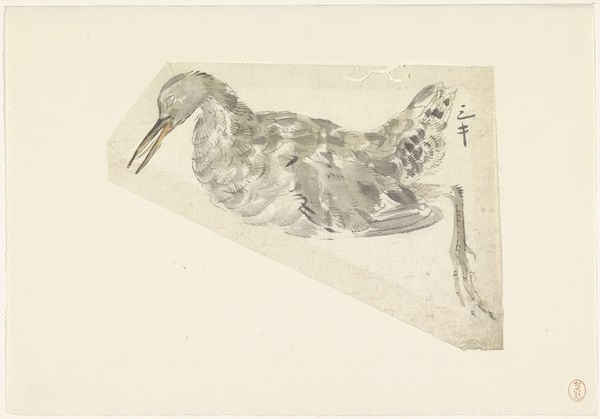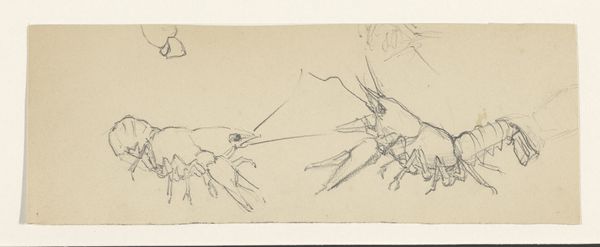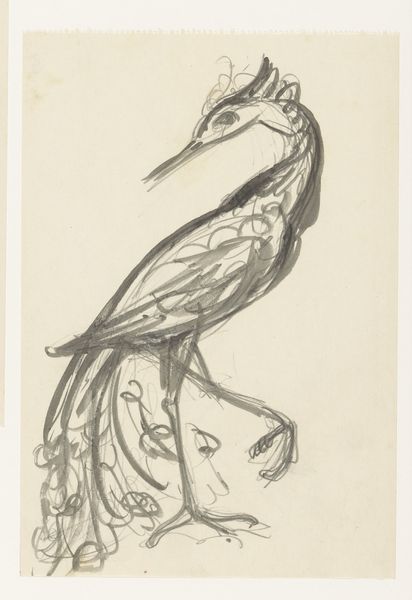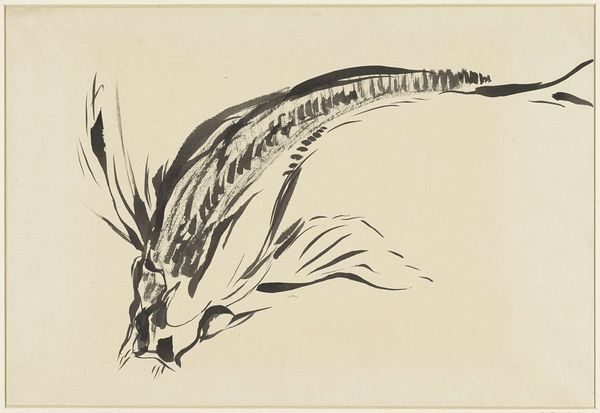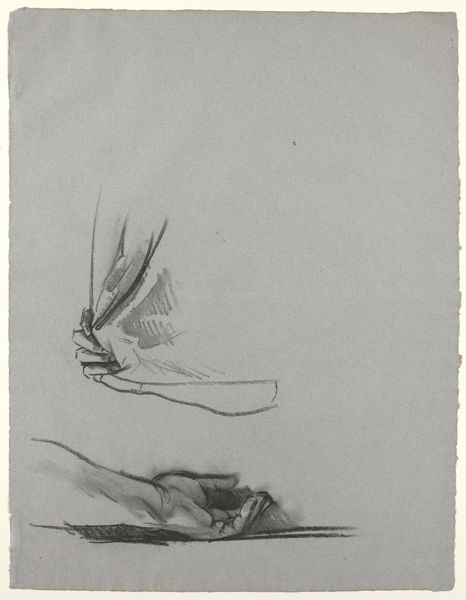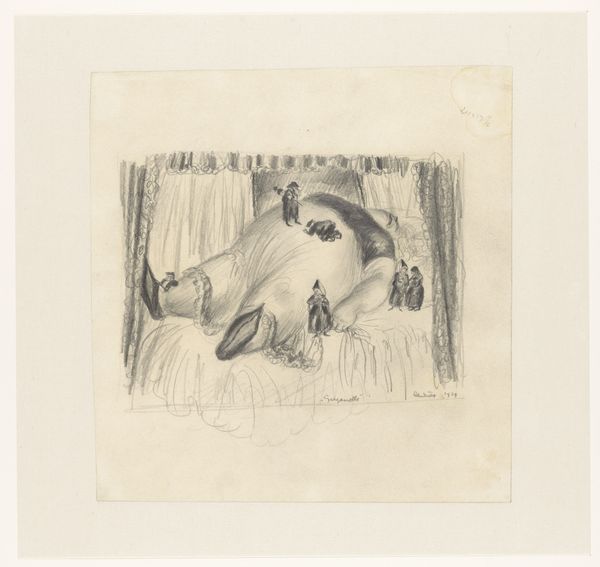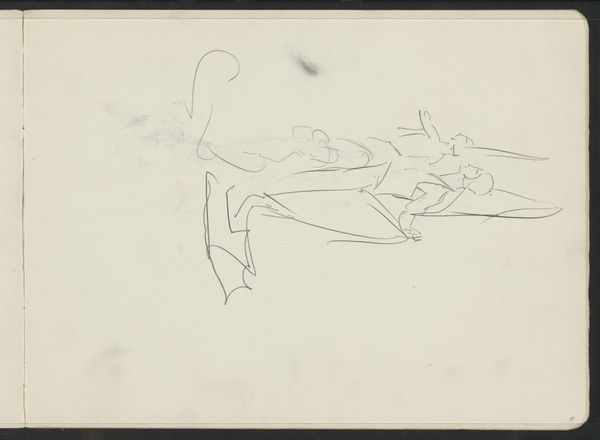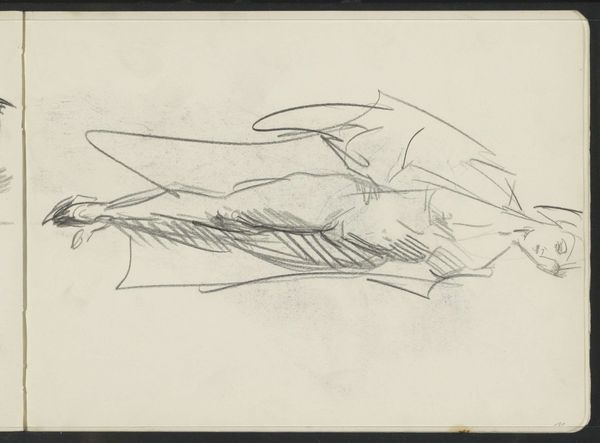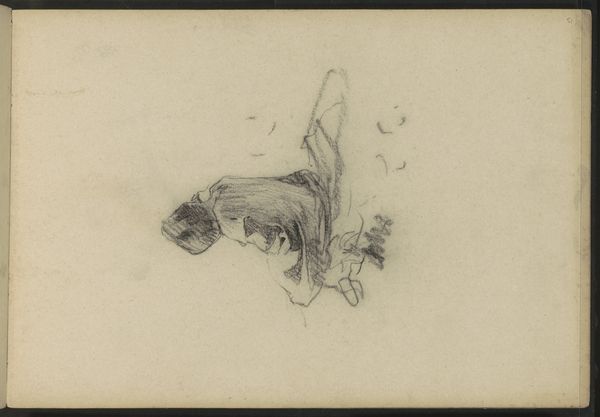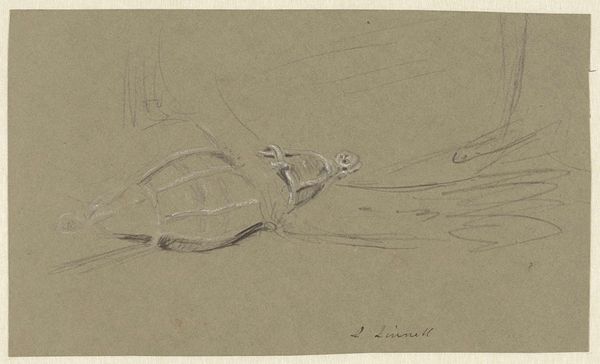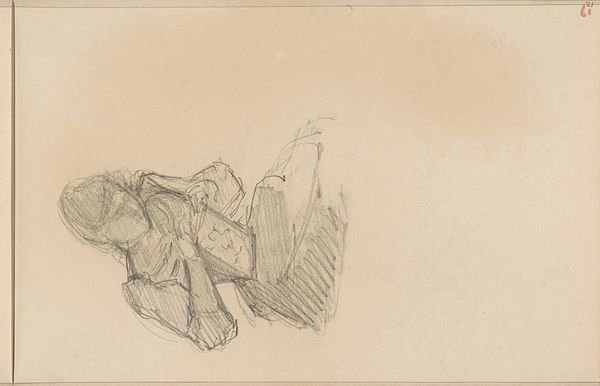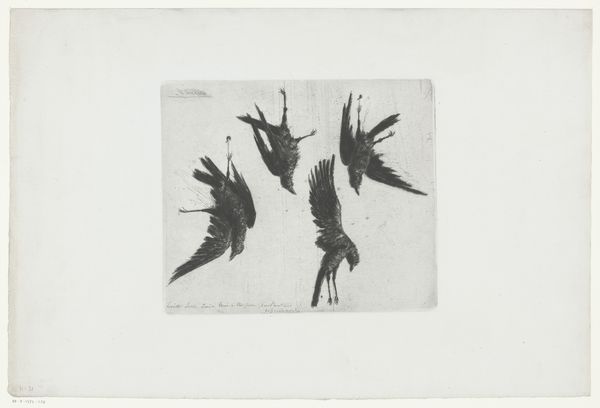
painting, watercolor
#
painting
#
bird
#
watercolor
#
coloured pencil
#
romanticism
#
watercolour illustration
#
watercolor
Dimensions: height 300 mm, width 227 mm
Copyright: Rijks Museum: Open Domain
Editor: Here we have "Stilleven met drie dode vogels," or "Still Life with Three Dead Birds," by J.N. Landré, probably from the 19th century. It's a watercolor painting, and frankly, it's quite somber. What's your take on it? Curator: Well, it’s a compelling example of how still life traditions were used to reflect on broader social themes. While seemingly about dead birds, paintings like these often commented on issues of mortality, power, and the place of humans in the natural world. These ‘game pieces’ decorated dining rooms; have you considered how this artwork functioned as both decoration and a stark reminder of the cost of a meal? Editor: That's an interesting point! So it's less about the birds themselves and more about the culture that placed them on a wall after hunting? It does seem a bit brutal to have this in a dining room now. Curator: Exactly. The Romantic era also grappled with nature's power, the fleeting nature of beauty, and anxieties surrounding class and ownership. This imagery may reflect an obsession of a certain class asserting dominion. The very act of displaying these birds can be interpreted as a status symbol, a public announcement. What do you see in the overall composition of the painting? Editor: I notice how stark it is. The birds are very detailed, but the background is quite plain. It forces you to focus on the dead birds. Is that meant to emphasize the, uh, social commentary? Curator: Precisely. By stripping away a detailed background, the artist intensifies our gaze on the birds themselves, highlighting the visual and perhaps ethical questions of taking life. I appreciate how our modern sensitivity clashes with the assumed norms of the 19th century. Editor: This has definitely made me reconsider what I initially saw. It's not just a painting of dead birds, it's a mirror reflecting social norms. Curator: Indeed. And that's the power of historical context, transforming what seems like a simple image into a window into another era's values and anxieties.
Comments
No comments
Be the first to comment and join the conversation on the ultimate creative platform.
